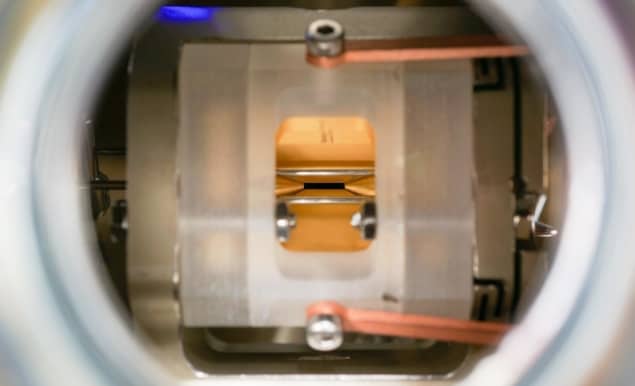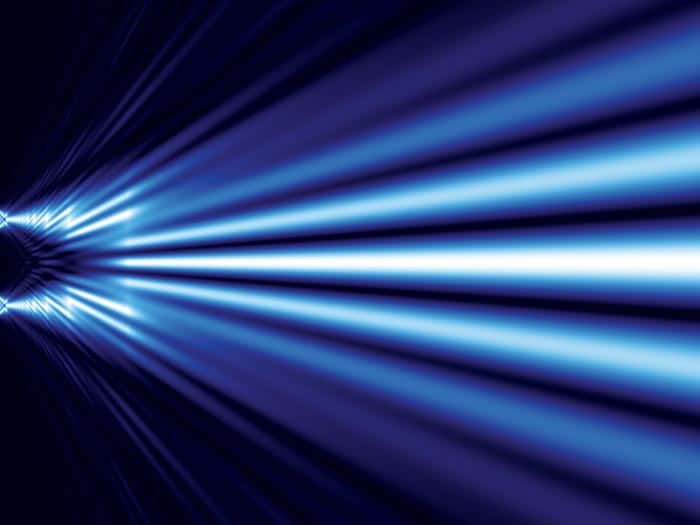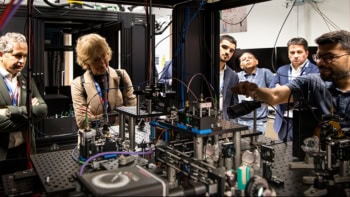
Anyone familiar with quantum mechanics knows that the act of measurement forces quantum systems into definite classical states. But new research shows that some measurements don’t destroy all quantum information in the process. It also reveals that measurements are not instantaneous, but instead gradually convert superposition states into classical ones.
The idea that all superposition is destroyed when a measurement is made was an underlying assumption of quantum mechanics as formulated by John von Neumann and others in the 1930s. Two decades later, however, Gerhart Lüders theorized that certain “ideal” measurements should only collapse superpositions of the specific states being probed, leaving others intact. In this way, he argued, a series of such measurements should preserve quantum coherence.
In the latest work, Markus Hennrich and colleagues at Stockholm University, Sweden, together with researchers at the universities of Siegen in Germany and Seville in Spain, performed an ideal measurement involving a single ion of strontium. As they report in Physical Review Letters, they began by using a laser to place the ion in a superposition of two states (out of a possible three), with each state corresponding to a different energy level of the ion’s outermost electron. They then used a short pulse from another laser to excite the ion from only one of the three states, causing it to fluoresce – an ideal measurement according to Lüders’ criteria.
Indirect detection
In this measurement, a single photon is emitted in a random direction, making it difficult to detect directly. Instead, Hennrich and colleagues carried out what is known as process tomography. This involves using laser pulses that reveal, for every possible combination of superposition states, whether the superposition has been destroyed or preserved.
Repeating this process many times over, the researchers found that the excitation and emission destroyed all the superpositions related to the state being probed. The other superpositions, however, remained intact. According to Hennrich, this shows that he and his colleagues had indeed carried out an ideal measurement. What’s more, the fact that they did not need to detect the emitted photons shows that the measurement process does not depend on the presence of an observer. “It is already happening as a result of one fluorescence photon being emitted into the environment,” he says.
Weak measurement
The group then studied the dynamics of the measurement process by varying the power of the laser used to excite the ion. The idea was to reduce the power such that the ion was no longer guaranteed to fluoresce, instead doing so only a fraction of the time. Because fluorescence is less probable at lower powers, Hennrich explains that these weak, or imperfect, measurements would be equivalent to intermediate stages in the measurement process – in other words, “snapshots” of that process.
By carrying out tomography at these varying power levels, Hennrich and co-workers showed that the measurement process causes the superposition to collapse gradually (although the whole process is over in about a millionth of a second). They found that the degree of superposition between the ion’s different states matched those predicted by Lüders’ model 94% of the time.

In praise of weakness
Proving that Lüders was right about ideal measurements will not come as a surprise to other physicists, says Hennrich. Indeed, he points out that in 2016 Arkady Fedorov and colleagues at the University of Queensland, Australia showed that ideal measurements could be made in a three-level superconducting qubit placed in a microwave cavity. But that system, he adds, was somewhat artificial. “What we have shown is that you can realize a Lüders process through a natural measurement,” he says.
Fedorov praises the European researchers for carrying out “a nice physical implementation” of a quantum measurement, pointing out that unlike his group they studied both strong and weak versions. But he feels that the distinction between natural and artificial processes is not very significant. If anything, he reckons, using an artificial system is more demanding given the need “to engineer a particular regime”. The choice, he says, “is a matter of taste”.
Error correction
As for possible applications, Hennrich says that the latest work might be used to improve error correction in quantum computers, given that weak measurements could in principle allow errors to be detected in quantum states without destroying those states in the process.
The researchers also want to investigate the possibility of more complex ideal measurements, in which the measurement process affects multiple states, rather than just one. “Whether such processes exist as natural processes and can be implemented with a fidelity comparable to our experiment is an open question,” they write.



